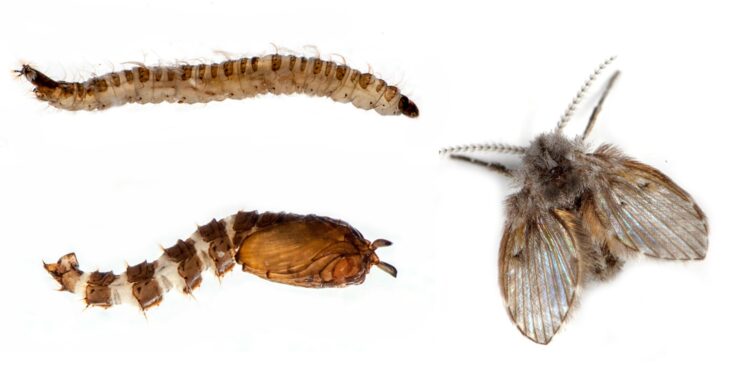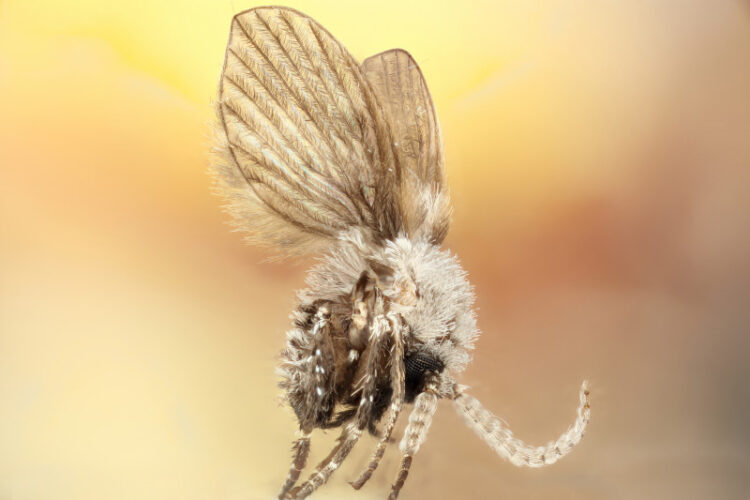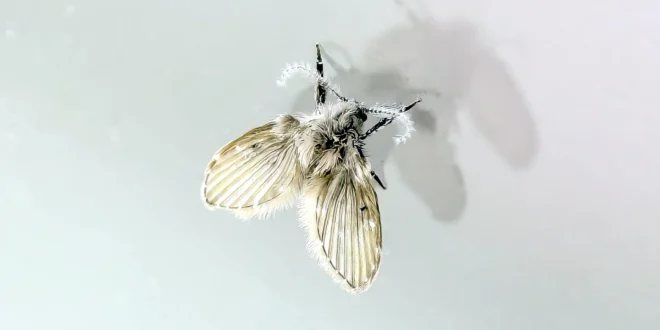As Aussie homeowners, we quickly become aware of the many little challenges that can – and do – crop up unexpectedly. Among these are household pests, and uninvited guests determined to turn your habitat into their own.
And while spiders and cockroaches steal the limelight in most Australian pest narratives, let’s not overlook the humble drain flies. These common pests are indeed small but can create a flutter that is disproportionately larger. Understanding and managing these pests is crucial to maintaining a healthy and comfortable living environment.
So, strap in and join us on a know-it-all journey concerning charming yet pesky drain flies often found in Australian homes and the necessity of eliminating drain flies in your home.
What are Drain Flies?
What are these small, moth-like creatures flitting around your home? Enter drain flies, also known as moth flies, or sewer gnats. These tiny critters are typically 1.5mm to 5mm long, sporting soft, furlike bodies and equally fuzzy wings.
The life of a drain fly is a short but productive one. Their life cycle begins with eggs laid in damp habitats, such as the grime in your pipes, which in turn hatch into larvae. The larvae then pupate before finally emerging as adult drain flies generally within a week. In the right conditions, adult drain flies can live up to 20 days. A lifetime is spent laying eggs and starting the life cycle anew.
But why do they prefer homes? Simply put, drains provide a convenient breeding ground teeming with organic material that larvae thrive on. As harmless as these flies may seem, they pose potential risks, including the spread of bacteria and, more commonly, respiratory irritation from inhaling drain fly scales in large numbers.
How to Identify a Drain Fly Infestation

It’s easier than you think to spot a drain fly infestation. A regular sighting of adult flies in bathrooms, kitchens, or basements is a tell-tale sign. Check drains, sinks, and showers, as these moist and dark areas are favorite haunts for these creatures.
It’s also crucial to distinguish a drain fly from other household pests. The clue lies in their distinctive, fluffy, moth-like appearance and their unique swarming behavior. Correctly identifying pests is half the battle won in effective pest management.
Prevention Measures for Drain Flies
As they say, prevention is better than cure, and it couldn’t be more accurate in pest management. A significant first step is to maintain good sanitation in your home, particularly in the drains. Regularly rinsing drains with warm water and eco-friendly cleaning solutions eliminates organic matter and prevents drain fly infestation.
Remember, these flies can breed in any damp place; hence, areas in your home prone to condensation and leaks should also be monitored and maintained. Routine inspection and upkeep of potential breeding grounds, such as sinks, showers, floor grates, washing machines, and air conditioners, go a long way in keeping these pests at bay.
How to Get Rid of Drain Flies

Rolling up your sleeves and getting stuck into drain fly removal is sometimes the best way forward. There are several DIY removal methods such as gel-based drain cleaners or homemade vinegar traps that have proved effective.
Commercial pest-control products are also an option. Look for products specifically designed to eliminate drain flies; these are usually bio-enzymatic cleaners that dissolve the organic material in the pipes that drain flies feed on. Use these as directed on the packaging for best results. Remember, if your DIY measures aren’t lightening the swarm, it’s high time you consider help from professional pest management.
While playing pest control, safety is important. Whichever method you choose, ensure you adhere strictly to safety measures to avoid any harm to you, your family, or your beloved pets.
Preventing the Recurrence of Drain Flies
Successfully ridding your home of drain flies is only half the battle. To prevent a re-infestation, it’s vital to understand and address the conditions that attract them in the first place. A proactive approach that combines regular maintenance and vigilance is the key to ensuring these unwelcome pests don’t make a comeback.
- Regular drain maintenance ─ A clean drain is unappealing to drain flies. Regularly cleaning your drains will ensure there’s no decaying organic matter, which these pests thrive on. The absence of their food source makes your drains less inviting.
- Address leaks promptly ─ Often, what attracts drain flies is a hidden pipe leak. This can provide the damp environment they love and enable them to make their way up to your drains. By ensuring you fix any leaks promptly, you can prevent this. Should you suspect a leak but can’t identify its source, considering a professional water leak detection or burst pipe inspection might be a prudent choice.
- Check for other attractants ─ Beyond drains, drain flies can be lured by other decaying organic matter. If your drains are clean and you still notice these pests, inspect other areas of your property for rotting fruits or other food sources that might be drawing them in. Regularly cleaning and disposing of waste can mitigate this issue.
- Temporary testing ─ If you’re uncertain about the source of your drain fly issue, you can use a simple test to confirm their origin. By placing a small cup or a plastic lid lightly coated in oil over a suspected drain, you can trap emerging flies. Their presence on the lid will confirm the drain as their point of origin.
- Seek professional help ─ Sometimes, recurring drain fly infestations can hint at more significant underlying plumbing issues. Whether it’s damaged pipes or more severe blockages, don’t hesitate to call a professional plumber. They can provide a comprehensive assessment and recommend the best course of action.
By adopting these practices and maintaining vigilance, you can ensure your home remains free of drain flies. Remember, a clean and well-maintained home not only keeps pests at bay but also creates a more pleasant living environment for its inhabitants.

Conclusion
Understanding and managing drain flies in our homes can seem an exhausting endeavor. But armed with the right knowledge and practices, stable and long-term countermeasures can be achieved.
Through this article, we’ve explored the life and preferences of drain flies, identified their infestation, and initiated you into the world of DIY removal methods. In essence, effective drain fly management boils down to good sanitation practices combined with vigilant upkeep of the home.
Maintaining a regular routine of pest control measures is critical to a healthy, comfy home. Here’s to a pest-free Australian home – for now and in the future! We hope this guide supports you in understanding and managing common household pests, and remember: knowledge is the first step towards action.
 Hi Boox Popular Magazine 2024
Hi Boox Popular Magazine 2024



